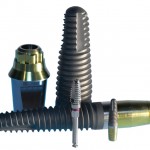
The amount of bone available in the upper jaw following the loss of teeth is reduced to alveolar bone loss and the presence of the maxillary sinus. Sinus lift procedures increase bone volume by augmenting the sinus cavity with autogenous bone or commercially available biomaterials, or both. This review is an update of the 2010 Cochrane review and aims to assess the beneficial or harmful effects of bone augmentation compared to no augmentation when undertaking a sinus lift procedure. And in addition, to compare the benefits and harms of different maxillary sinus lift techniques for dental implant rehabilitation.
Searches were conducted in the Cochrane Oral Health Group’s Trials Register the Cochrane Central Register of Controlled Trials (CENTRAL), Medline and Embase databases. There were no language or date restrictions. Randomised controlled trials (RCTs) of techniques and materials for augmenting the maxillary sinus for rehabilitation with dental implants reporting implant success or failure at least to four months after initial loading were included. Standard Cochrane methodology was followed.
- 18 RCTs involving 650 patients were included.
- 5 trials were considered to be at low risk of bias, 11 at high risk an one at unclear risk
- 4 trials involving 102 patients evaluated short implants (5 to 8.5 mm long) as an alternative to sinus lift in bone with residual height between 4 and 9 mm. They were assessed to be of moderate quality (three trials at low and one at high risk of bias)
- One year after loading there was insufficient evidence to claim differences between the two procedures: –
- for prosthesis failure OR= 0.37, 95% CI 0.05 to 2.68; (three trials) or
- implant failure OR = 0.44, 95% CI 0.10 to 1.99; four trials).
- However, There was an increase in complications at treated sites when undertaking the sinus lift (OR 4.77, 95% CI 1.79 to 12.71, P value = 0.002; four trials).
- 14 trials with 548 participants compared different sinus lift techniques. Only three comparisons included more than one trial (two trials for each). These were bone graft versus no bone graft, autogenous bone versus bone substitute, bone graft with or without platelet-rich plasma (PRP). There was insufficient evidence to claim a benefit for any of these techniques for the primary outcomes of prosthesis and implant failure. For the other reported outcomes, in a single study at high risk of bias, only bone gain was greater for the bone graft site than the site without a graft six months after augmentation, however this was not significant at 18 or 30 months.
- The other comparisons with single studies were rotary versus piezosurgery to open a lateral sinus window, two different bone substitutes, use or not of a membrane to seal the lateral window, one- versus two-stage lateral sinus lift, two-stage granular bone versus one-stage autogenous bone blocks, and crestal versus lateral sinus lift; two trials compared three different crestal sinus lifting techniques: rotatory versus hand malleting (patients preferred rotatory instruments over hand malleting) and hand versus electric malleting. There was no evidence of a benefit for any sinus lift procedure compared to any other for the primary outcomes prosthesis or implant failure.
The authors concluded
There is moderate quality evidence which is insufficient to determine whether sinus lift procedures in bone with residual height between 4 and 9 mm are more or less successful than placing short implants (5 to 8.5 mm) in reducing prosthesis or implant failure up to one year after loading. However, there are more complications at sites treated with sinus lift procedures. Many trials compared different sinus lift procedures and none of these indicated that one procedure reduced prosthetic or implant failures when compared to the other. Based on low quality evidence, patients may prefer rotary instruments over hand malleting for crestal sinus lift.
Comment
As the authors note although there is insufficient evidence to determine if sinus lifts are more or less successful than short implants there are more complications in sites that have undergone a lift at one year. They highlight the need for larger well-designed trials with longer term follow up but note that from the available information it is difficult to indicate which procedure should be evaluated first. It is also suggested that Trials should focus on clinically important outcomes, such as implant failure and complication rates, rather than histological or surrogate outcomes.
Links
Esposito M, Felice P, Worthington HV. Interventions for replacing missing teeth: augmentation procedures of the maxillary sinus. Cochrane Database of Systematic Reviews 2014, Issue 5. Art. No.: CD008397. DOI: 10.1002/14651858.CD008397.pub2

[…] Dental Elf- 22nd May 2014 – Available evidence is insufficient to show if sinus lift technique… […]